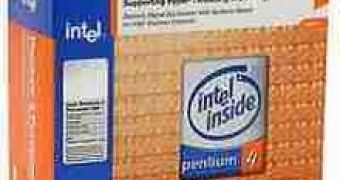INTEL has informed all partners and system builders that it has begun phasing out several models of CPUs that belong to the older NetBurst architecture. The models 650 (3.4 GHz), 640 (3.2 GHz) and 630 (3.0 GHz) will be phased out starting with January 11. According to INTEL, last orders can be placed May 4 2007 and the last shipments of these CPUs will exit the factories on August 3, 2007 (BOX CPUs) and July 4, 2008 (TRAY CPUs).
However, this announcement does not affect the newer 65nm Netburst CPUs. 631, 641 and 651 series have the same clock speeds as their 90nm brothers, but they are based on the newer Cedar Mill core. Older 5xx series which integrates only 1MB of level 2 cache is still on INTEL's roadmap although it too uses the 90nm manufacturing process. The same can be said about the dual core series 8xx. This move makes me think that INTEL is starting to phase out the entire 90nm line, motive for which they are dropping 90nm parts first.
Moreover, this phase out is a part of INTEL's plan to introduce the next-generation single-core CPUs called Conroe-L: The E1020 (1.4 GHz), E1040 (1.60 GHz) and E1060 (1.8 GHz) will probably come out in February and later this year the dual core Conroe-L E2000-series will also emerge (probably in the 3rd quarter of 2007). These new value CPUs will replace NetBurst cores which will all disappear by the end of 2007.
The NetBurst architecture was launched in 2000 when the first socket 423 Willamette CPUs running at 1.4GHz appeared. At first, a 1.4 GHz Willamette was slower than a PIII Tualatin running at 1GHz but the main advantage of Netburst is that it could cope with extremely higher speeds. Speaking of which, the fastest NetBurst CPU had a working frequency of 3.8GHz. The 7 year old line was a mixed bag in terms of success especially after AMD rolled out the faster Athlon 64 CPUs, but managed to keep the same pace as AMD until the first Core-based CPUs were launched.

 14 DAY TRIAL //
14 DAY TRIAL //